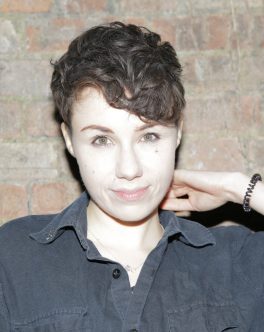Soledad Muniz works with marginalised communities, using participatory video to amplify their voices and mobilise social change.
I spoke to her about her previous life in comms, what led her to participatory video, and what she thinks the charity sector can borrow from participatory processes.
Can you tell us a bit about your career background and what led you to decide to work in participatory video?
I worked for 10 years in Buenos Aires in communications and public relations for universities, charities, foundations and corporate social responsibility. I used to write speeches for vice chancellors, press releases, annual reports, anniversary books, case studies, etc. Increasingly I started to feel the rhetoric was not necessarily representative of reality. I wanted the protagonists to tell their own stories.
I started to question whether to stay in PR or to move into another area of communications. I did an MSc in communication for innovation and development at the University of Reading. It turned my understanding of communications on its head. My dissertation focused on participatory video and photography as key approaches to engage people, no matter their level of literacy, in processes of community development, empowerment and advocacy for their rights.
Ten years later, I’m the head of innovation and development at InsightShare, having done participatory video projects in every continent, including in the UK with disadvantaged young people and minority groups in London.
What is Participatory Video?
In your opinion, what does best practice look like in charity communications?
For me the crucial question to ask ourselves as communicators is: how fair is our representation of reality in our marketing and communications strategies? Are we representing the groups we are here to serve in a dignified and respectful way? If the answer is yes, there’s no reason not to use traditional, top down methods of communication (top down meaning: being decided by the organisation). If the answer is no, there is a big problem to address.
Being an ethical professional means raising the bar for good practice. I think when we see something that isn’t good enough; we have to push for change. In this way, participatory communication creates the opportunity for co-creation with those we serve as an organisation. They can choose how to represent themselves, including the what, how and why. There are multiple ways to do this. Participatory video is just one of them.

InsightShare
What are some of the challenges you’ve faced using participation and how do you overcome this? What does success look like?
There are many potential challenges in participatory processes, depending on the circumstances of the groups you are working with. You need to clearly define your aims, who you want to engage and for what purposes. It’s crucial to be transparent about that with the groups, as well as listen to their expectations of the process. This will help you to engage as equals in co-creation, with respect for their aims and expectations. Being joined by a skilled facilitator who understands participation will further enrich the process and make sure you stay on track.
In my mind, success means mutual understanding from the conception of the project, to the delivery. Specifically, the purpose should be co-designed, and the group should take all editorial decisions regarding how they want to represent themselves. Because of this, we act as a guide in technical matters, rather than decision-makers. Success also means reaching the audiences you and the group want, with this powerful message they have created.
Are there any moments in your career that made you certain about the decision you made?
Each project, each face, left a mark. Every time I witnessed a person grow in self-confidence, grow in technical skills and feel pride in speaking up for themselves. Every time I’ve seen a group come together, unpack certain issue through storytelling, come to terms with how to represent it and have intense dialogue around what can be done about it. Every time I’ve seen action be taken by them after a workshop on a concrete issue. Behaviours changing. Decision-makers listening. Smiles and pride in their faces.

InsightShare
Witnessing people using their agency to represent themselves and tackle their issues is the biggest privilege of my job. The young girls I first trained in participatory video in Lambeth North, part of a sports for change programme used to prevent and respond to issues of gangs. The women and men I trained in Montenegro working hard to influence environmental policies in their local governments through action and advocacy. The adolescent girls in Guatemala fighting for a chance to study and decide when to marry, who became participatory video facilitators. The indigenous communities I trained in Panama and Mexico to use participatory video to tell their stories their own way. I remember every face.
If you could take one element from participatory video and apply it to all communications about vulnerable or marginalised communities, what would it be?
I think the key element is treating people as equals, with respect and dignity, letting them co-create messages with us, choosing how to represent themselves. That’s at the core of the method and can achieve multiple parallel aims in communication and programmatic activities.

Image: InsightShare
Find out more about InsightShare and its projects here.
Read more:
Putting your subject first, the key to effective co-creation


